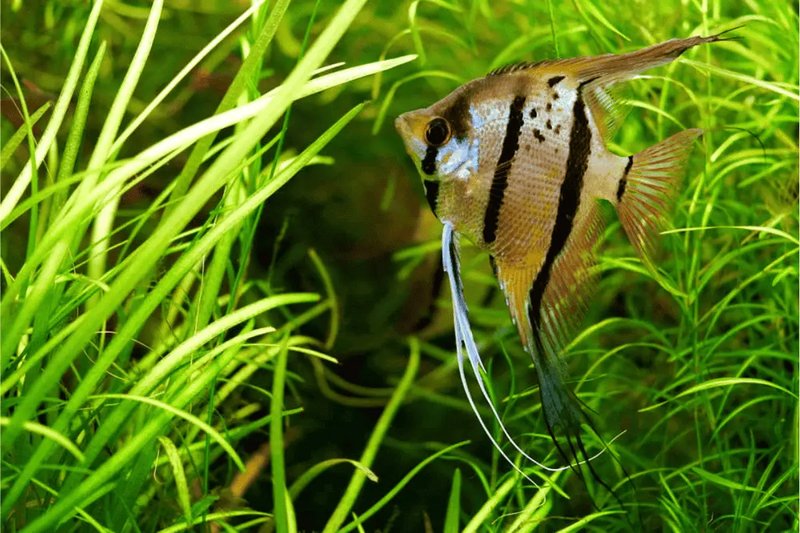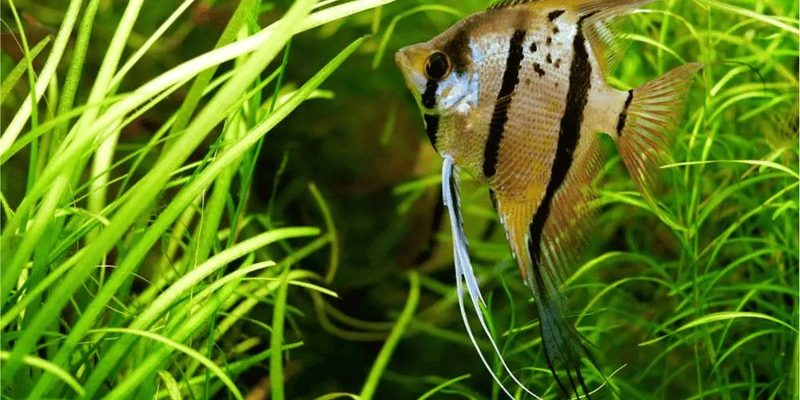
You might be wondering, “What size tank do I need?” or “How do I create the right water conditions?” Let’s dive in together! Setting up a tank for angelfish isn’t just a hobby; it’s a rewarding experience that brings the joy of nature right into your living room. Grab your coffee, and let’s talk about everything from tank size to décor!
Choosing the Right Tank Size
When it comes to angelfish, tank size is super important. These fish can grow quite large, up to six inches long, and they need space to swim and explore. A small tank can lead to stress and health problems. So, how do you know what size to go for?
A 20-gallon tank is the absolute minimum for a pair of angelfish, but bigger is always better. Ideally, go for a 30-gallon or larger if you have the space. Here’s why: In a larger tank, you’ll have more space for your angelfish to move around, and it allows for better water quality—always a plus! Plus, with the extra space, you can add other tank mates, giving your aquarium a lively community feel. Just be sure to pick compatible fish!
Another benefit of a larger tank is stable water conditions. Angelfish prefer warm, slightly acidic water, so having a bigger volume helps maintain temperature and pH levels more consistently. Trust me, your future angelfish will thank you!
Understanding Water Conditions
Water conditions play a huge role in keeping your angelfish happy and healthy. These fish have specific needs, so let’s break down what you should consider.
First up is temperature. Angelfish thrive in water between 76°F and 82°F. A reliable heater is key here. You wouldn’t want to jump into a chilly pool, right? The same goes for your fish!
Next, let’s talk about pH levels. Angelfish prefer slightly acidic to neutral water, ideally between 6.5 and 7.5 on the pH scale. You can check these levels using a simple aquarium test kit from your local pet store. Regularly monitoring your water conditions is essential.
Lastly, don’t forget about ammonia and nitrate levels. Ammonia should be at zero, while nitrates should stay low (ideally under 20 ppm). Regular water changes—about 10-20% weekly—will help keep your tank fresh. Keeping an eye on these factors ensures your angelfish have a stable environment to flourish.
Filtration and Aeration
A good filter is like the lungs of your aquarium—it keeps the water clean and fresh. Angelfish can be a bit sensitive to poor water quality, so having a powerful yet quiet filter is essential.
Choosing the right type of filter is crucial. Canister filters are popular for larger tanks, providing excellent filtration and aeration. They keep the water clean and help with biological filtration, breaking down harmful substances. If your tank is smaller, a hang-on-back filter can be an economical and effective option.
Now, let’s talk about aeration. While angelfish don’t necessarily need high water movement, having a gentle current can help distribute oxygen throughout the tank. You might consider using an air stone to achieve this. Just make sure the bubbles aren’t too active—no one likes a wild ride!
Creating the Perfect Décor
Let’s move on to tank décor. Not only does it make your aquarium look gorgeous, but it also provides your angelfish with places to hide and explore. Think of it as creating a miniature forest or riverbank!
Start with substrate. Sand or fine gravel works best, as it mimics their natural habitat. Avoid rough edges that could harm their delicate bodies.
Next, add plants. Live plants are fantastic, as they help improve water quality and give your fish hiding spots. Consider varieties like Java fern or Amazon sword plants; they’re hardy and beautiful. If live plants aren’t your thing, silk plants can also be a safe option.
Lastly, include decorative items like driftwood or caves. Angelfish enjoy swimming around and hiding in these structures. Just make sure everything you choose is safe for aquariums. An excellent rule of thumb is to avoid anything with sharp edges or toxic materials.
Lighting Your Aquarium
Lighting is another critical aspect of your angelfish tank setup. It not only enhances the colors of your fish and plants but also impacts their behavior and growth.
You might be thinking, “How much light do I need?” Generally, angelfish do well with 10-12 hours of light per day. A good quality LED light can mimic natural sunlight and promote plant growth if you’ve included live plants in your tank.
On the other hand, be cautious about too much light. It can lead to algae growth, which isn’t fun for anyone. If you notice excessive algae, consider reducing your light exposure. You can also add some algae-eating snails or fish to help keep it in check.
Monitoring and Maintenance
Once your tank is set up, keeping it in shape is important. Regular maintenance helps create a stable environment for your angelfish.
Start with weekly water changes. Removing 10-20% of the water helps eliminate toxins and keeps your water conditions steady. Also, don’t forget to clean your filter regularly—this ensures it’s running efficiently.
Another key aspect is observing your fish daily. If you notice any unusual behavior, like hiding a lot or not eating, that could be a sign something’s off. A quick check of your water parameters and tank conditions can help you catch any issues before they escalate.
Don’t stress too much. With some patience, your tank will thrive, and you’ll have a beautiful home for your angelfish.
Setting up the ideal tank for angelfish takes time and care, but it’s so rewarding! From choosing the right tank size to creating the perfect environment with décor and plants, every detail counts. Remember, the better you can mimic their natural habitat, the happier your angelfish will be.
So, whether you’re just starting your aquarium journey or looking to enhance your setup, keep these tips in mind. With the right approach, you’ll create a stunning aquatic world that not only looks great but also supports the health and happiness of your angelfish. Happy fishkeeping!

